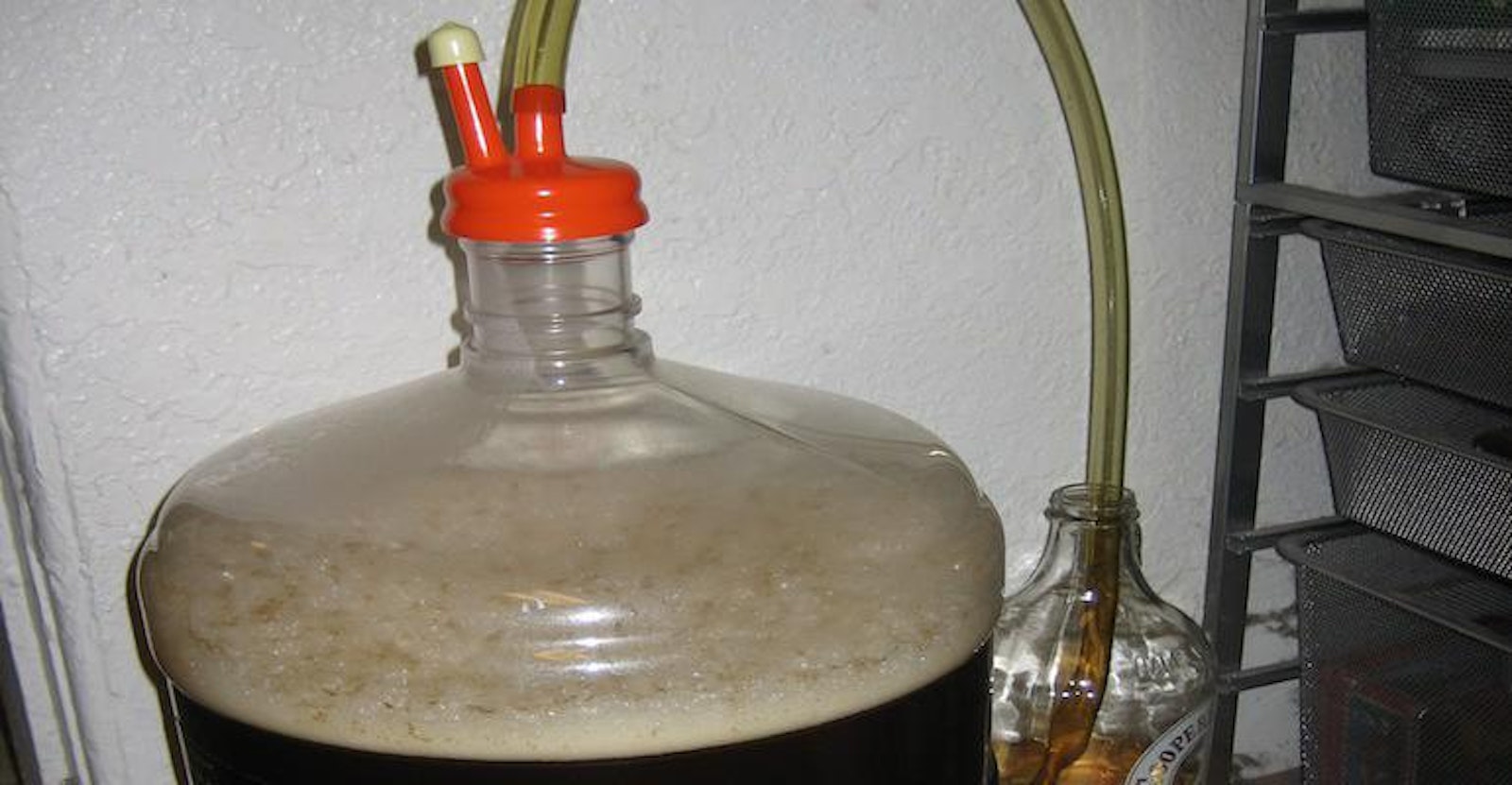Most of the time, I do just fine with the standard-issue airlocks you find at homebrew stores nationwide. I prefer the 3-piece airlock for primary fermentation and the S-shaped model for secondary and bulk aging. But sometimes, an airlock just doesn’t cut it. And that’s when I bust out the heavy artillery. I’m talking about the blow-off tube.
A blow-off tube is nothing more than a generous length of wide-diameter tubing. One end plugs into your fermentor in lieu of an airlock, and the other end is submerged in an adjacent container of sanitizer (I use a spare growler jug). This setup effectively relieves pressure within the fermentor and allows Kräusen (foam) to safely escape rather than clog the airlock, thereby saving you from a beer eruption and the embarrassment of having to mop the ceiling.
So, how do you know you need a blow-off tube before you actually need a blow-off tube? Here are a few criteria I consider when deciding to reach for the blow-off tube instead of a regulation airlock.
- Headspace: If I exceed my anticipated volume for some reason, I might end up with 5.5 or 6 gallons of wort in a 6.5-gallon bucket. When that happens, I don’t even bother with an airlock and go straight for the blow-off tube.
- Original gravity: High gravity wort can ferment so vigorously that the head of Kräusen grows faster than an airlock can possibly relieve the rising pressure. I start out with a blow-off tube for any beer with an original gravity higher than about 1.060. There’s no magic in that number; it’s just what works for me.
- Yeast strain: Some yeast strains are more aggressive than others. I’ve never needed a blow-off tube for lagers, and only rarely for ordinary British ales. But I always use one for German Hefeweizen yeasts and most Belgian strains, regardless of starting gravity.
- Temperature: A fermentation that starts too warm or isn’t in a thermally-controlled environment can easily get out of hand. Fermentation produces heat, which encourages yeast activity, which, in turn, raises the temperature, and so on. If you don’t have good temperature control, a blow-off tube is good insurance, especially in summer.
The goal of all of this, of course, is to prevent a mess. Another way to keep things clean is to leave the lid open and conduct an open fermentation. But that’s a topic for another day...

